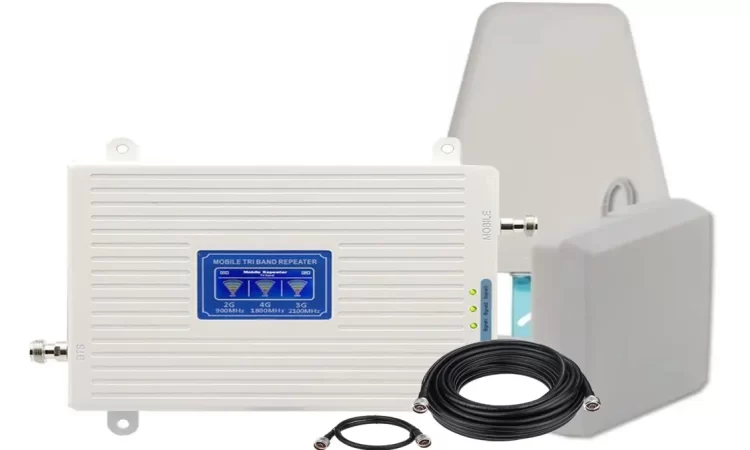Communication occupies a prominent place in the ideal functioning of societies. Poor network coverage will prevent you from easily making calls and accessing the Internet at your convenience. The failure of the signal can be explained by the presence of numerous obstacles or by the distance from the transmitting antenna. This phenomenon is observed both in the countryside and in the city. It could cut you off from your customers and partners. You may lose important contracts. Fortunately, the legal mobile signal booster in the uk makes it possible to permanently remedy this problem.
Table of Contents
The principles of mobile phone signal amplification
The mobile phone has significantly changed daily life, but there are places outside the coverage area of the mobile operators’ network where you can’t use your mobile network. These areas affected by this lack of mobile signal strength are perfectly known and identified:
- Tunnel or parking in the basement.
- Large office areas, supermarkets and shopping malls.
- Shops or apartments located on the ground floor of large buildings.
- So-called “white” areas in isolated countryside, and boats at sea.
One of the solutions to solve this reception problem and be able to take full advantage of your mobile device is the installation of a legal mobile signal amplifier in the UK.
The principle of the booster is to generate a copy of a weak signal coming from the local mobile station, and to transmit this amplified copy to your mobile phone, and vice versa. However, this system, for example by UCtel, guarantees optimal operation within a distance of about 35 kilometers between the signal transmission station and the site on which the repeaters are installed.
What does a booster consist of?
Concretely, a legal booster of mobile signal in the UK is composed of an outdoor antenna, an indoor antenna, a coaxial cable, and therefore an amplifier. The outdoor antenna picks up the weak signal and transmits it to the amplifier via the connection cable. This amplified signal is then sent to the indoor antenna, which is responsible for transmitting it to mobile phones in the home, business or office where the repeater is installed. In addition to the pleasure of being able to use your phone, the signal booster, for example, by UCtel, also allows thanks to the reception of a stronger signal to reduce radiation and extend the life of phone batteries.
Factors that can limit GSM signal strength
Even in an area where the mobile signal is supposed to be strong and stable, close to the carriers’ cell towers, certain factors cause interference that can limit or prohibit the use of a mobile phone. While signal deterioration in underground areas is well known, GSM signal strength can also be affected by the thickness of a building’s walls or ceilings (some materials absorb waves), or by traffic volume, topography or weather conditions. While it is possible to accurately calculate the strength of a mobile signal, this complex calculation is generally reserved for professionals in the mobile telephony sector, especially since it differs according to the type of network (2G, 3G or 4G) and according to the operators. For most users, this signal strength is expressed by the number of receive bars that appear on their phone, and which nevertheless gives a correct estimate of the signal strength at a given time or place.
Mobile signal coverage in the UK
With the development of mobile telecommunications and the use of smartphones for more and more important tasks of daily life, access to a high-performance network has become a real issue of equality between territories. While the main UK operators offer a network adapted to demand in the vast majority of the country, some rural or mountainous areas are excluded from this mobile signal coverage, and cannot benefit from sufficient speed to simply call and even less access mobile Internet services.
A situation that is already penalizing for individuals, but which also represents a brake on the economic and social development of these “white areas”, both at the level of local authorities and associations, as well as that of companies and shops. Each mobile operator offers an interactive map of 3G and 4G, or even 5G signal coverage, which shows the number and position of relay antennas, as well as the bands and frequencies used, very important information for choosing and installing a GSM amplifier.
It is not uncommon to encounter reception problems in some buildings while it is possible to see a relay antenna on the roof of the neighboring building. This recurring problem follows the use of certain materials that literally prevent the reception of the signal inside the building. The main culprits are reinforced concrete and treated glass which can absorb waves and therefore make the use of a GSM repeater indispensable.
Problems faced by users due to poor coverage
One of the most common concerns from cell operator consumers is the increased number of lost calls before they can even utter a few words. The existence of one of the two phones in an area where there are not enough radio waves available to sustain communication causes the network to become saturated, resulting in a call cut. The second source of these call failures is poor signal reception; when the phone is out of range of the mobile operator’s antennae, the active call cannot be maintained over another operator’s network, resulting in the conversation being stopped.
Boost a 4G signal
The GSM booster has the function of improving a 4G signal on a site thanks to its outdoor antenna that picks up the weak signal, amplifies it, and transmits it to phones via its indoor antenna. Choosing the right repeater model requires reading the operators’ data carefully, as the frequency bands used vary not only depending on the address at which the 4G amplifier will be installed but also depending on the frequency that the operator concerned uses for the 4G signal, which will not be the same as that of 3G.
3G signal boosters
To improve a 3G signal, it will therefore be necessary to choose a 3G GSM amplifier adapted to the frequency bands of your operator’s 3G signal, but also adapted to the size of the building concerned.








